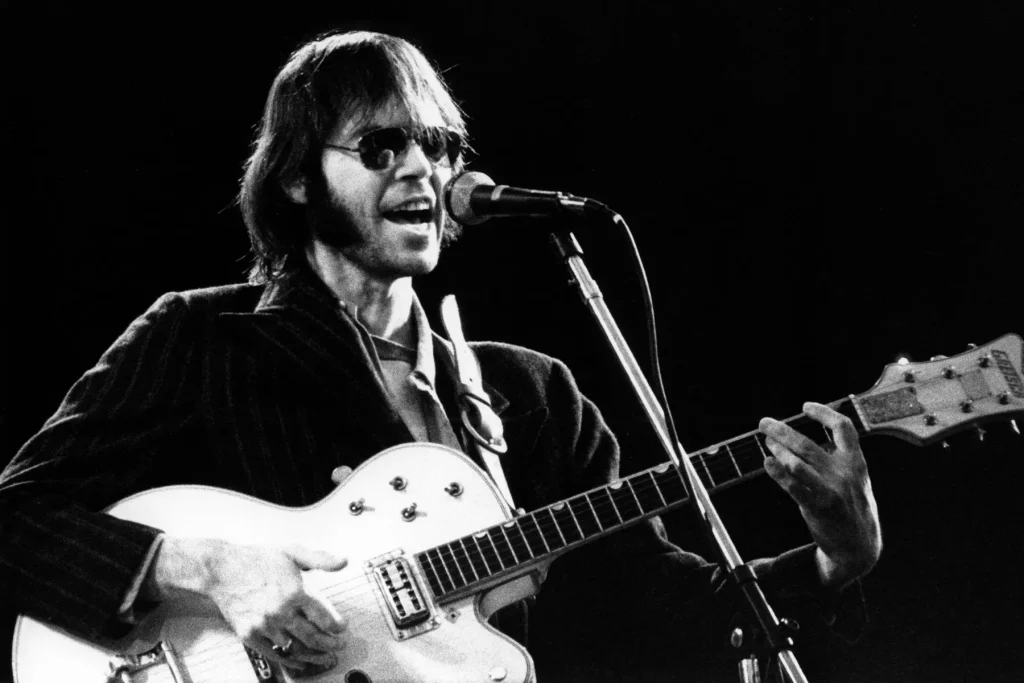
Neil Young’s “Heart of Gold”: A Timeless Folk Anthem of Soulful Reflection
Neil Young, a name synonymous with poignant storytelling and raw, unfiltered emotion, struck a chord in the hearts of millions with his 1972 release, “Heart of Gold.” This song, which became his first and only single to reach the number one spot on the Billboard Hot 100 chart, has since become an enduring classic in the folk-rock genre. It’s a song that continues to resonate with listeners, both old and new, for its simplicity, honesty, and the deep yearning embedded within its lyrics.
“Heart of Gold” comes from Young’s critically acclaimed album “Harvest,” an album that marked a significant moment in his career. With its acoustic sound and introspective lyrics, “Harvest” is often seen as a defining moment in Neil Young’s extensive discography. The album blends folk, country, and rock elements, creating a sound that was both reflective of the times and timeless in its appeal. Among the tracks, “Heart of Gold” stands out as a beacon of Young’s ability to connect with his audience on a deeply personal level.
The song itself is a quest for purity and goodness, a theme that is both universal and deeply personal. Neil Young sings of searching for a “heart of gold” and expresses his weariness in the pursuit. The lyrics, “I’ve been to Hollywood, I’ve been to Redwood, I crossed the ocean for a heart of gold,” paint a vivid picture of a journey, both literal and metaphorical, in search of something pure and true in a world that often feels tarnished and weary. This search is something that many can relate to, which is perhaps why the song has resonated with so many people over the decades.
Musically, “Heart of Gold” is built around a simple, yet effective melody, with Neil Young’s distinctive voice taking center stage. His harmonica playing, a staple in many of his songs, adds a hauntingly beautiful layer to the track, enhancing the sense of longing and introspection. The song’s arrangement is straightforward, allowing the lyrics and Young’s vocal delivery to shine. This simplicity is part of what makes the song so powerful—it doesn’t need to be overproduced or complex to convey its message.
When “Heart of Gold” topped the charts, it wasn’t just a commercial success; it was a moment that solidified Neil Young as a voice of his generation. Despite its success, Neil Young himself has had mixed feelings about the song’s popularity, once commenting that the song put him “in the middle of the road” and that he “headed for the ditch,” seeking out more challenging and unconventional musical paths in the years that followed. This sentiment reflects the artist’s desire to stay true to his roots and not be boxed in by the expectations of mainstream success.
In the years since its release, “Heart of Gold” has been covered by numerous artists and remains a staple of Neil Young’s live performances. It’s a song that has transcended its era, continuing to be a touchstone for anyone who has ever felt the weight of the world in their search for something true and good. As we listen to “Heart of Gold” today, it’s a reminder of the enduring power of music to connect us, to soothe us, and to remind us of the beauty in the struggle to find a “heart of gold” in ourselves and others.